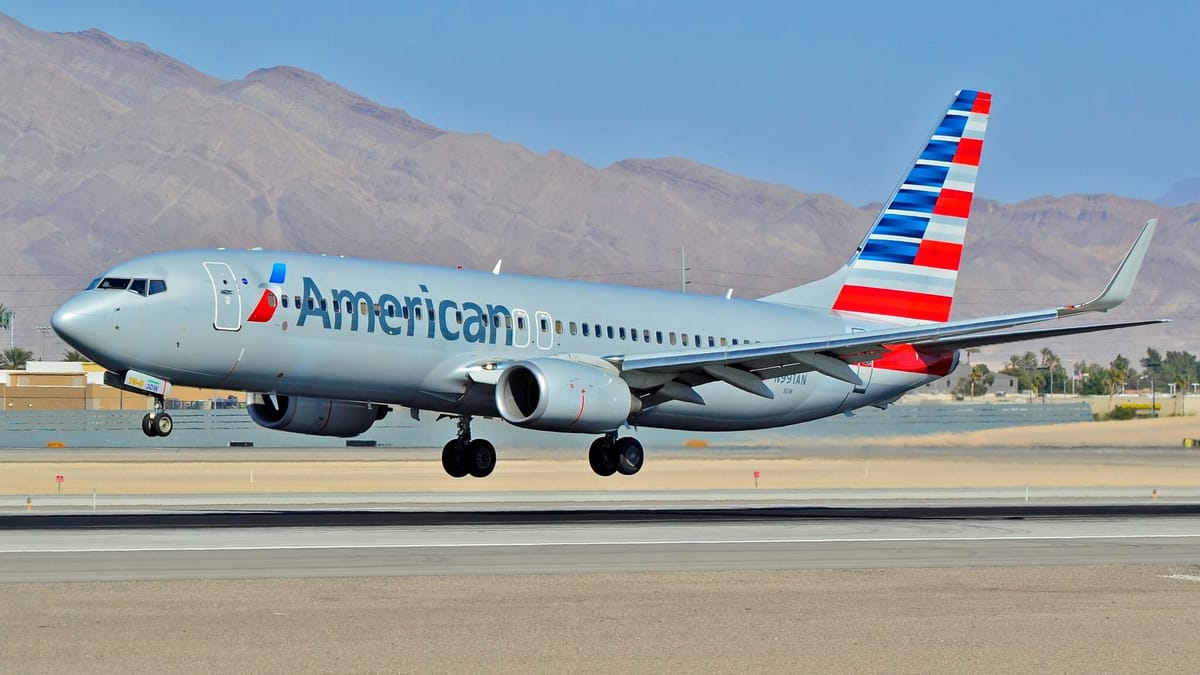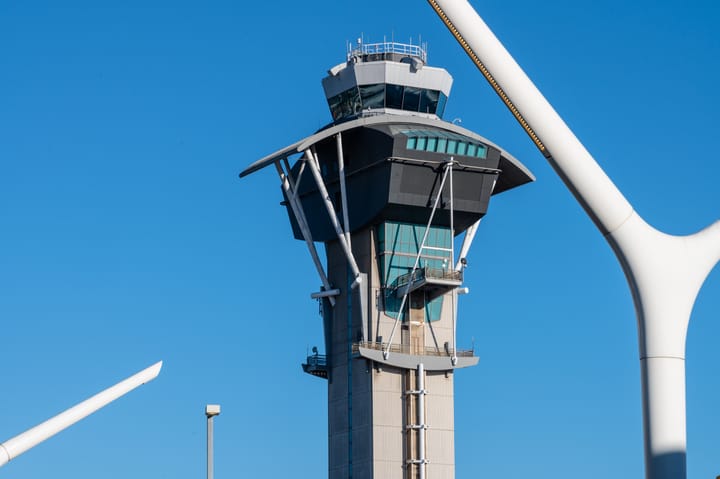NTSB: Improperly reconnected brakes led to American Airlines B737 runway excursion at DFW
Four days before the incident, American Airlines converted the aircraft's brakes.

The National Transportation Safety Board (NTSB) has released its final report about American Airlines flight AA 1632, when the Boeing 737-800 that operated the flight stopped beyond the runway threshold line at Dallas Fort Worth International Airport (DFW).
On November 10, NTSB published its final report about the runway excursion after an American Airlines 737-800, registered as N991AN, stopped beyond the runway threshold following its landing at DFW.
The single-aisle jet arrived on flight AA 1632 from Washington Ronald Reagan National Airport (DCA) on February 10, 2024.
According to the NTSB, the 737-800 experienced a brake system anomaly upon landing at DFW, resulting in a loss of braking effectiveness and increasing the aircraft’s stopping distance. The single-aisle jet, carrying 98 passengers and six flight crew members, stopped in the paved overrun area beyond the threshold of runway 17L.
A second after the 737-800 landed at DFW, the autobrake parameter changed from ‘No Auto brake’ to ‘Auto Brake applied,’ and then immediately went back to ‘No Auto Brake,’ which indicated that the autobrakes had deactivated.
In post-incident interviews, the pilots told the NTSB that they saw the ‘AUTOBRAKE DISARM’ light illuminate, and since the brakes did not engage, in order to stop, they braked manually.

Per the cockpit voice recorder (CVR) transcript, around 20 seconds after touchdown, both pilots remarked something about the brakes, with the captain saying that the brakes were not working. The first officer informed the tower at DFW, and the flight data recorder (FDR) showed that the 737-800 “experienced several abrupt changes in acceleration, consistent with an overrun beyond the runway threshold.”
The aircraft stopped at 19:42:33 local time (UTC -6), around a minute after landing at the airport. All 104 people onboard the aircraft evacuated the 737-800 via air stairs, and none were injured.
The NTSB explained that each main landing gear (MLG) has a braking system that is powered by hydraulic system B and is manually controlled by the pilots via the brake pedals. “Pedal movement is transmitted through cables to left and right brake metering valves located in the wheel well, which regulate hydraulic pressure to the respective brake assemblies,” and each wheel is equipped with a rotor-stator brake assembly that uses hydraulic pressure to generate braking force.
Four days before the incident, American Airlines had modified the aircraft and replaced the original steel brakes with carbon brakes, the investigators noted. The work was based on Boeing Service Bulletin (SB) 737-32-1429, Revision 4, and completed by following an Engineering Order (EO) and associated cards dated November 2, 2022.
“The EO and associated cards included detailed maintenance instructions with sign-off blocks and incorporated the technical content of the Boeing Service Bulletin, supplemented with additional information to ensure compliance with American Airlines’ continuous airworthiness maintenance program.”
When converting the 737-800’s brakes from steel to carbon, the airline’s employees installed four flow limiters, “replacing the existing bulkhead unions between the rigid hydraulic tubes and flexible hydraulic hoses.” The increased length of the flow limiters, the original rigid tubes were replaced with shorter ones, the NTSB detailed.
The installation process required the temporary disconnection of each flexible hose, the removal of the bulkhead union, the installation of the flow limiter, and the reconnection of the flexible hose.
Post-incident troubleshooting revealed that the flexible hoses connected to the right inboard and right outboard MLG brakes “had been improperly reconnected following the carbon brake and flow limiter installation.”
“Specifically, the flexible hydraulic hoses supplying pressure to the number 3 and 4 brakes had been swapped at their connections with the flow limiters […].”

American Airlines’ further inspections “revealed a discrepancy with the wiring to the left MLG wheel speed transducers,” and during an operational test, personnel discovered that the wiring harness within the MLG axle had not been installed correctly.
“As a result of these two discrepancies, when a skid occurs, the non-skidding wheel would receive the brake pressure release intended for the wheel on the same MLG that is skidding, and the skidding wheel would receive the (potentially full) metered brake pressure due to its brake not being released.”
The combination of the switched hydraulic brake hoses and wheel speed transducers, “the use of manual braking would not have released the subsequently locked and skidding outboard tires.” The skidding tires had worn flat until they failed, the NTSB pointed out, leading to lost braking effectiveness that increased the aircraft’s stopping distance.
“The investigation confirmed that the only mechanical discrepancies were the reversed hydraulic hoses to the number 3 and number 4 MLG brakes and the reversed wheel speed transducer wires for the number 1 and number 2 MLG wheels.”
Thus, the NTSB concluded that the probable cause of the incident was “improper maintenance due to human error during a braking system modification diminished braking performance.” A contributing factor to the diminished braking performance “was the lack of a functional check to verify the flexible hydraulic hoses and transducer wiring were connected correctly after the braking system modification.”
Following the incident, American Airlines revised the EO by adding a step to label the flexible hydraulic hoses before their removal, requiring an inspector to verify that they were properly reconnected. A transducer operational test was also mandated, which detects either swapped flexible hydraulic hoses or swapped transducer connectors.
The airline issued engineering authorizations (EAs) and EOs to check its entire 737 fleet for swapped transducer wiring, and following inspections of 303 aircraft, zero had swapped wiring.
American Airlines also revised its 737 Next Generation (NG) and 737 MAX aircraft maintenance manuals (AMMs) to enhance the transducer operational test, and the MLG installation card has been updated with enhanced steps to ensure the transducer wires are not crossed.
Meanwhile, Boeing added an information notice to the aforementioned SB, alerting operators of the risk of crossing hydraulic hoses when reconnecting the flexible hydraulic hoses to the new flow limiters. The planemaker emphasized “that each flexible hydraulic hose must be reconnected to its corresponding flow limiter and that hoses must not be crossed at any point along their length.”
An improper reconnection “will result in incorrect antiskid system operation, potentially leading to a loss of braking action and/or tire failure,” according to the NTSB.
Boeing also issued two Fleet Team Digests for the 737 NG and 737 MAX, providing interim and final actions to operators of both types, which included a list of best practices to avoid incorrect connections following the brake conversion.
The manufacturer’s final action was to revise specific AMM tasks and SBs “where improper maintenance may occur.” The NTSB concluded that it had investigated several instances that stemmed from “cross wiring of wheel speed transducers, all were the result of maintenance human error.”




Comments ()